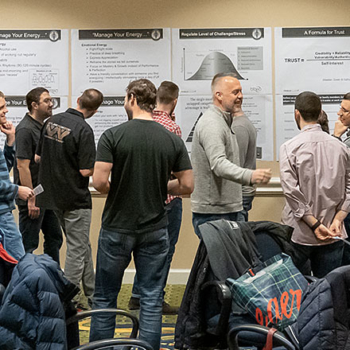Michael / June 7, 2021
BTI360 Named Best Place to Work 2021 Washington DC
On May 20, the Washington Business Journal revealed their 2021 Best Places to Work rankings. BTI360 was pleased to again make the list, ranking in the top ten in the large company category (50-249 people)….
Michael / May 25, 2021
Tech Leadership Academy
Tech Leadership Academy When: May 24, 2:30 pm Where: Virtual Our May Tech Leadership Academy session focused on lessons from the book The Five Dysfunctions of a Team by Patrick Lencioni.
Michael / May 13, 2021
May Orange Slice
May Orange Slice When: May 12, 3:45 pm Where: Herndon Our first in-person Orange Slice in more than a year. Virtual meetings have come a long way, but it’s great to be together in person….
Michael / May 4, 2021
Software Architecture Workshop
Architecting Workshop When: May 3, 9:30 am Where: Herndon Hybrid virtual-in person training event. “Architecture: The Hard Parts” with Neal Ford and Mark Richards.
Michael / April 20, 2021
BTI360 Tech Leadership Academy
At BTI360 we really care about the growth and development of our teammates. We offer half a dozen internal classes a year, provide free technical books, send teammates to conferences every year, and have an…
Chris / April 6, 2021
Terraform Backend: Role-Based Access Control – Part 2
A prior post covered how some teams at BTI360 use CloudFormation to manage Terraform’s AWS backend infrastructure, including the state bucket and lock table. Our previous post introduced three permission levels for accessing Terraform state:…
Chris / March 17, 2021
Terraform Backend: Role-Based Access Control – Part 1
We previously discussed using Terragrunt to manage your Terraform backend configuration. As a refresher: A backend controls where Terraform’s state is stored Terraform state maps resources created by Terraform to resource definitions in your *.tf…
Close Form
Enjoy our Blog?
Then stay up-to-date with our latest posts delivered right to your inbox.
Stay in Touch
Whether we’re honing our craft, hanging out with our team, or volunteering in the community, we invite you to keep tabs on us.




